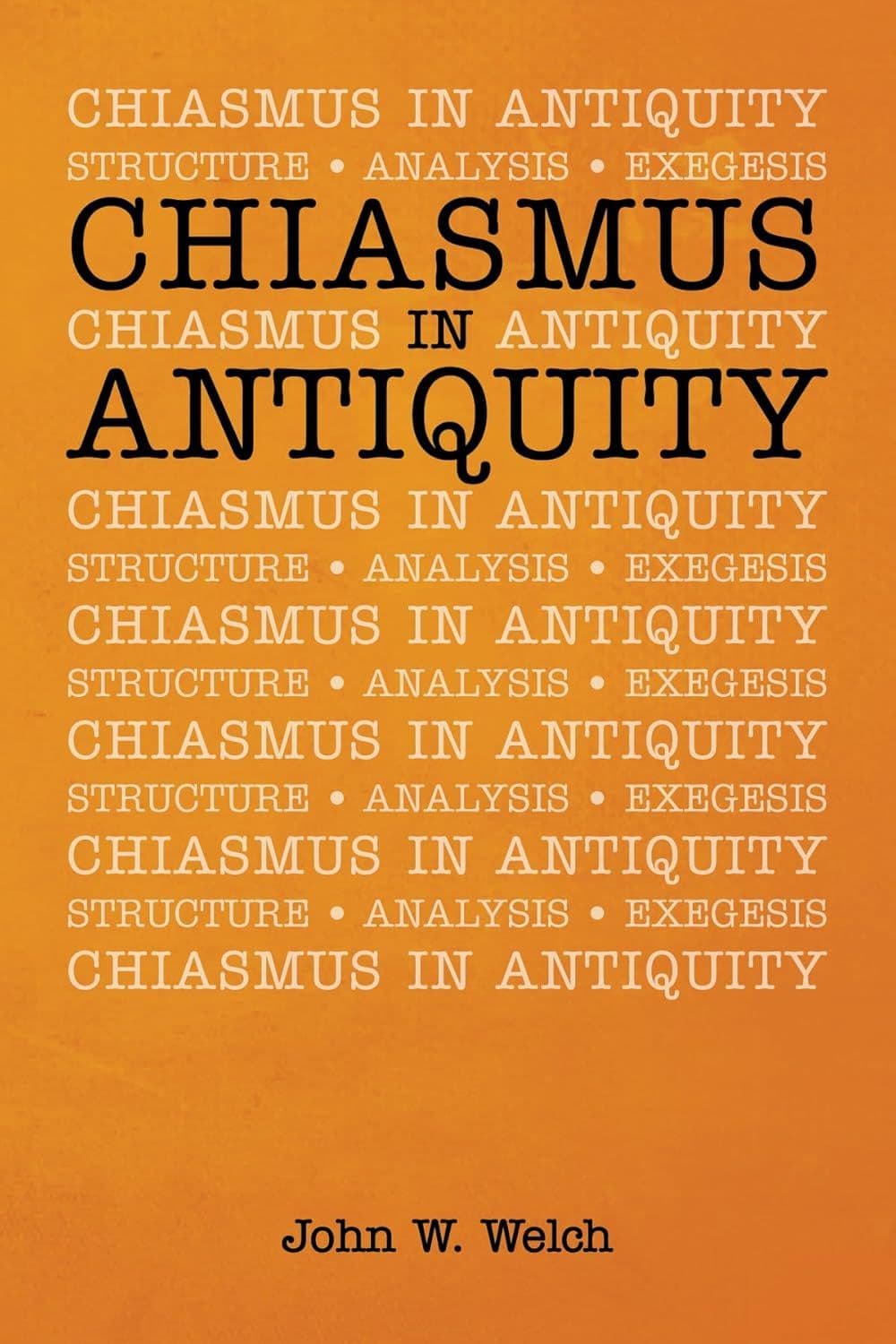Book
13 Chapters

Chiasmus in Antiquity is a much-needed and very welcome volume of essays devoted to the study of a single linguistic and literary phenomenon, aptly if not always accurately described by one Greek word, itself derived from the form of the Greek letter chi (= X, i.e., a cross or cross-over). Chiasm occurs to one degree or another in most languages and literatures, though with varying frequencies and effects. A comparative study of this widespread phenomenon, especially in ancient literatures where it occurs in great abundance is highly commendable.
The basic figure of chiasm simply involves the reversal of the order of words in balancing clauses or phrases. Since the cross-over effect is not required in any language, it is an optional and often deliberate practice which serves one or several different purposes. Questions are generally raised, at this level, not about the existence or identification of the device, but rather about its significance and force in the overall structure. Is it more than a trivial inversion, or does it have some arcane or aesthetic validity with palpable or subliminal meaning?
The more extended uses of chiasm raise further questions. As with much of literature, especially poetry, ambiguity and obscurity are inherent in the form and content: chiasm only adds to the uncertainty and mystery. Scholars now recognize chiasms beyond the simple type described above, chiasms which involve passages of verse or prose ranging in length from a few sentences to hundreds of thousands of words. This more complex form of chiasm is not merely grammatical but structural or intentional; it systematically serves to concentrate the reader’s or hearer’s interest on the central expression. The number of such chiastic constructions which satisfy both sets of criteria: inversion and balance on the one hand, and climactic centrality on the other, is substantially less than the simpler mechanical variety. But wherever they are present, these structures may add novel perspectives and unexpected dimension to the texts in which they appear.
There is yet a further extension of the term chiasm. Even more difficult and controversial issues arise when chiasm is defined in terms of thought and theme, rather than the more visible words and patterns. Inevitably a large subjective element enters into these discussions, and the presence or absence of chiasm on this level can become almost a voter’s choice.
Scholars, therefore, may range between separated areas of research in their approach to chiasm. On the one extreme, the phenomenon itself can be described or defined rigorously, so that it is verifiable and often self-evident; while in this sense it is part of a deliberate pattern of composition, it nevertheless leaves the wider world of symbolism and significance to others. At the other end of the spectrum, definitions and limits are hard to determine, and speculation is rife; but large issues of meaning and intention can be raised, and important questions about the nature and significance of extended literary pieces are considered. The study of these great chiasms has enormous implications for analysis and interpretation, but the wider the scope and the more extended the reach, the less certain the results necessarily become. In the end, neither approach will escape if carried to extremes.
Only a book with many varieties of presentation can display the present state of chiastic studies. While a great deal of important work has been done across the many domains of ancient literature, the study of ancient literary techniques is still in ferment and flux. A common fund of axioms and assumptions and a single sure-handed methodology are yet to be established. The present volume reflects accurately both the ferment and the progress which is being made on a variety of fronts, and is all the more to be welcomed for bringing together the results of research in different literatures of antiquity The editor is to be commended for his catholicity and courage, and for his own original contributions in several domains including a unique treatment of the Book of Mormon. His introduction to the whole work is indispensable.
David Noel Freedman
Book
13 Chapters
Items in the BMC Archive are made publicly available for non-commercial, private use. Inclusion within the BMC Archive does not imply endorsement. Items do not represent the official views of The Church of Jesus Christ of Latter-day Saints or of Book of Mormon Central.